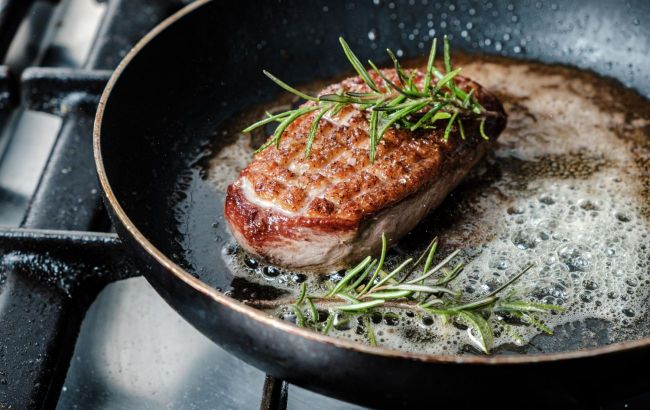Don’t fry meat without this essential step
 What should be done with meat before frying (photo: Freepik)
What should be done with meat before frying (photo: Freepik)
Before putting a piece of meat in the pan, it is worth thoroughly patting it dry with a paper towel. This simple step helps achieve a golden crust while keeping the inside juicy, according to the website Epicurious.
What you should always do
Often, when meat is fried, it ends up overcooked inside and burnt on the outside. This happens because of excessive moisture on the surface of the meat. Even a few extra drops of liquid can completely ruin a piece of meat.
Ideally, when you place a piece of meat on a hot pan, it should very quickly start the Maillard reaction. This is the process responsible for the delicious brown crust that forms during searing.
The ideal pan temperature should be well above 138°C before placing the meat. This helps to compensate for the cooling effect that occurs when the meat hits the pan.
The higher the temperature of your pan, the faster the surface moisture on the meat will evaporate, but it’s best to remove it entirely. Until the water fully evaporates, the meat will cook, but it won’t brown.
Heat transfers very efficiently through water. Although the internal temperature of the meat rises, the energy is still being used to evaporate the surface moisture rather than infuse the meat with flavor and create a crispy, brown crust.
The simplest way to get rid of surface moisture is to simply pat the meat dry with paper towels before cooking. This applies to any cooking method, not just pan-searing.
How not to dry out meat while frying
Choosing meat and preparing it
According to The Kitchn, the fat content of meat is very important. For example, chicken breast dries out faster than the thigh. For beef or pork, cuts with some fat retain juiciness better.
Acidic or fermented marinades (yogurt, lemon juice, vinegar) soften the meat fibers, helping it hold onto its juices. Before frying, allow the meat to warm up to room temperature so it cooks more evenly.
Proper frying technique
The pan should be hot so the meat forms a crust. Let the meat brown on one side before turning it over.
Add a little oil or butter – this insulates from direct heat and helps retain moisture.
Temperature and time control
Thin cuts cook very quickly, while thicker cuts need more time or pre-searing/braising.
Internal temperature guidelines:
- Chicken: 75°C
- Pork: 65–70°C
- Beef: 50–60°C for medium-rare
If you’re frying thick cuts, cover the pan for a few minutes – this helps even heating and prevents drying out.
Finally, let the meat rest for 5–10 minutes after frying. The juices will redistribute evenly, keeping the meat juicy.

